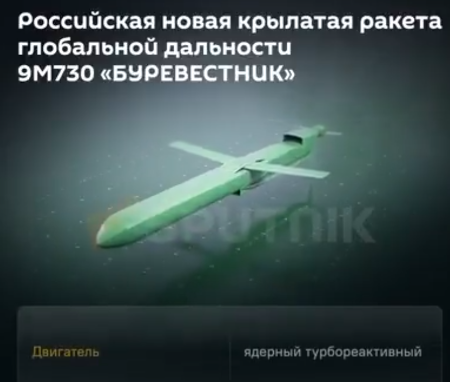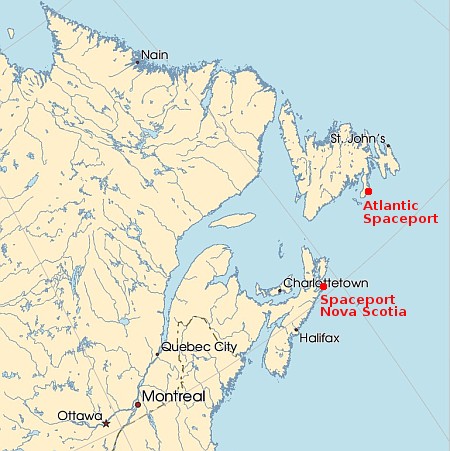Russia claims to have successfully tested a low-flying nuclear-powered cruise missile

Artist’s rendering of Burevestnik. Click for source.
According to claims coming from Russia’s state-run press yesterday, it has successfully tested a low-flying nuclear-powered cruise missile, dubbed Burevestnik (“Storm Petrel” in English), that uses a nuclear-powered rocket engine.
Few technical details have been released. The flight itself supposedly lasted fifteen hours during which the missile flew about 8,700 miles, making its average speed about 580 miles per hour. That speed is a little higher than the cruising speed of most airplanes. According to Russia’s state-run press, Burevestnik flies at an altitude of 80 to 300 feet and has an unlimited range.
It appears the missile captures air as it flies, compresses it and then sends it through the nuclear reactor to be heated, which when released as exhaust provides the thrust. If true, this missile is the equivalent of an autonomous airplane that can fly below radar detection anywhere on the globe, and thus a major threat to Russia’s enemies (which is essentially now the whole world).
At the same time, Russia’s ability to design, build and complete any high-tech project has been suspect for decades. Its government makes a lot of promises, but has almost never delivered.
Regardless, this technology bears watching. Expect the defense industry to use this story as a wedge with Congress to get more funding.

Artist’s rendering of Burevestnik. Click for source.
According to claims coming from Russia’s state-run press yesterday, it has successfully tested a low-flying nuclear-powered cruise missile, dubbed Burevestnik (“Storm Petrel” in English), that uses a nuclear-powered rocket engine.
Few technical details have been released. The flight itself supposedly lasted fifteen hours during which the missile flew about 8,700 miles, making its average speed about 580 miles per hour. That speed is a little higher than the cruising speed of most airplanes. According to Russia’s state-run press, Burevestnik flies at an altitude of 80 to 300 feet and has an unlimited range.
It appears the missile captures air as it flies, compresses it and then sends it through the nuclear reactor to be heated, which when released as exhaust provides the thrust. If true, this missile is the equivalent of an autonomous airplane that can fly below radar detection anywhere on the globe, and thus a major threat to Russia’s enemies (which is essentially now the whole world).
At the same time, Russia’s ability to design, build and complete any high-tech project has been suspect for decades. Its government makes a lot of promises, but has almost never delivered.
Regardless, this technology bears watching. Expect the defense industry to use this story as a wedge with Congress to get more funding.







